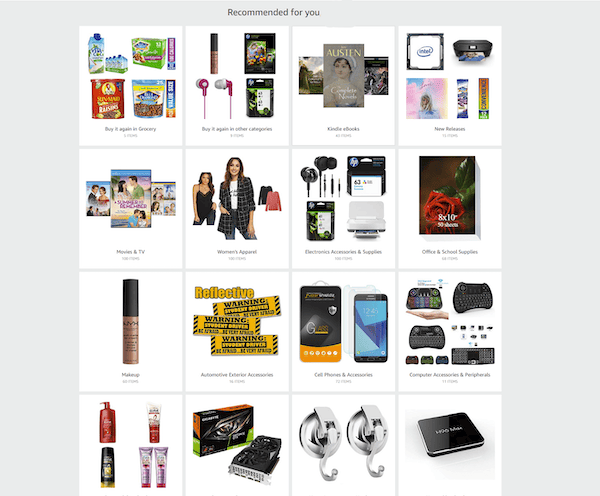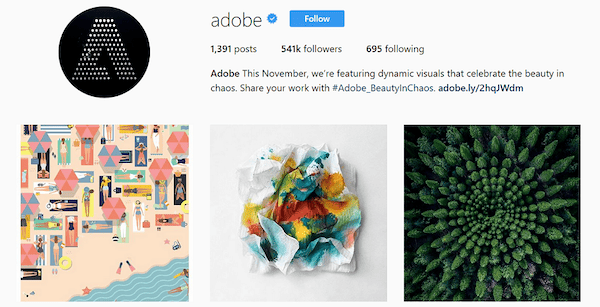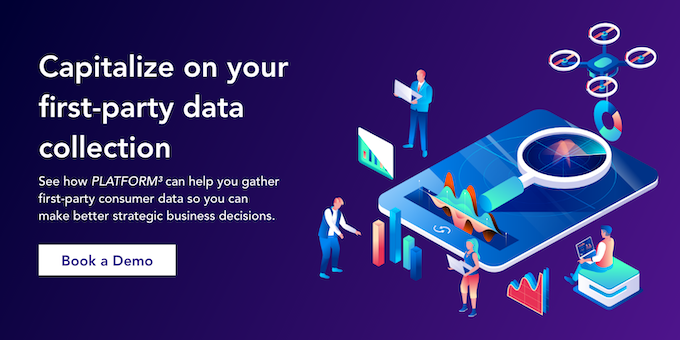Why Zero-Party Data Is Important For Your Customer Loyalty Strategy
The key to an effective customer loyalty strategy is having the right information about the right people at the right time. Marketers need to understand user behavior, preferences, and expectations in order to successfully turn qualified leads into loyal customers and eventually, turn loyal customers into brand advocates. They should prioritize zero-party and first-party data collection to help drive lead generation, customer acquisition, and user retention. How can companies use zero-party data to nurture customer loyalty?
What is zero-party data?
Zero-party data is information that audiences directly and intentionally give to brands in order to help marketers better understand and fulfill their needs. It comes with consumers’ explicit consent and knowledge of who has their information, what information they have, and how their information will be used. It’s also completely voluntary, as consumers aren’t required to provide their zero-party data in order to engage with a brand’s content, products, or services.
Companies primarily collect zero-party data through day-to-day marketing efforts, promotional campaigns, and progressive profiling. Some examples include poll, quiz, and survey responses, social media interactions, preference center data, and other types of personal information that allows marketers to learn more about their customers as individuals. This data is then used to segment their audiences according to shared similarities and build personalization-driven marketing strategies.
Comparing the different types of data
Zero-party data is a relatively new concept, as Forrester Research first coined the term in 2018. Businesses and marketers should be fully aware of the differences between zero-party data and other types of data:
First-party data comes from a brand’s audience. They provide their first-party data because it’s necessary for interacting with a brand. Companies directly capture this information through their users’ interactions with their products and services.
Second-party data comes from a brand’s trusted partners. They provide this information because it’s mutually beneficial for both parties. Companies either directly purchase second-party data from their trusted partners or through a data marketplace.
Third-party data comes from external sources. They provide this information because it gives marketers insights into their competitors and their industry as a whole. Companies purchase this information through data marketplaces, data vendors and brokers, and DaaS (data-as-a-service) businesses.
Benefits of zero-party data
The main advantage of zero-party data is its ability to help marketers foster meaningful connections with their customers. Zero-party data indicates which users are actively interested in forming a relationship with a brand, as it’s given on a completely voluntary basis. This helps companies identify which consumers provide the highest return on investment and customer lifetime value. It also provides marketers with deeper insights into their audience’s preferences and behaviors. This data can then be used to drive personalized marketing strategies for continuous conversions, sales, and engagement.
Zero-party data is also fully compliant with data protection laws, alleviating concerns about people’s personal information and privacy. Marketers don’t have to worry about facing monetary fines, legal action, or ethical risks. In return, consumers have an understanding of who has access to the information and how it’s being used. This creates a sense of trust and transparency between both parties, further strengthening user retention and customer loyalty.
How to collect zero-party data
Businesses collect zero-party data through their ongoing operations, marketing efforts, and promotional campaigns. Companies often start by capturing information through their website and app so they can nurture users along their buyer’s journey. For example, they might ask users about what kinds of emails they’d like to receive when they first register for an account or encourage them to leave a review once they’ve made a purchase.
They can also collect zero-party data through social media and email campaigns. Brands often use polls, surveys, and Q&A sessions to promote products, drive traffic and engagement, and conduct market research at the same time. Lastly, marketers can run promotional campaigns to create brand awareness, increase sales, and capture consumer data. Contests, sweepstakes, and giveaways provide shoppers with incentives to answer questions, provide feedback, and so on.
Zero-party data marketing strategies
Zero-party data can be leveraged much in the same way that it’s collected - to segment and target audiences based on their preferences, behaviors, and shared similarities. The continuous cycle of collecting, analyzing, and using zero-party data helps businesses refine their marketing strategies and improve the user experience over time, leading to increased customer retention and brand loyalty.
Progressive profiling, segmentation, and personalization
Progressive profiling is the process of capturing consumer data in small intervals over an extended period of time, rather than asking for all of their information at once. Brands often start with asking people for their name and email address when they first create an account. Then, they might ask for their email content preferences and product interests as they browse their website or app. For example, Spotify asks users what types of email and push notifications they’d like to receive, such as product news or music recommendations. Finally, they typically ask for their shipping information and payment details as they make a purchase. This keeps users from feeling frustrated or overwhelmed by the data collection process, and increases the likelihood of them completing their buyer’s journey.
Marketers can then continuously use first-party and zero-party data to help shape each individual’s path to purchase. To start, they can segment users by their interests and behavior based on how they answer lead capture forms, preference centers, and so on. Then, they can slowly start to build more detailed buyer personas as consumers continue to engage with them. Brands can use first-party data, such as website activity and purchase history, in combination with zero-party data, such as survey responses and product reviews, to drive stronger personalization efforts over the course of the company-consumer relationship.
Personalization fosters customer loyalty through trust, commitment, and reciprocity. When consumers see companies show interest in understanding and fulfilling their individual needs, they feel a stronger emotional connection with them and feel more motivated to build a relationship with those brands. With zero-party data, marketers can use consumer interests to send product recommendations, exclusive offers, and targeted messaging. For example, Amazon provides shoppers with different types of recommendations based on user preferences, prior purchases, and what other Amazon users are buying. This personalization-driven approach incentivizes users to engage with them in order to get both the products and brand experiences they’re looking for. Personalization ultimately results in increased conversions, higher customer lifetime value, and a stronger sense of loyalty.
Customer feedback and value creation
While much of data is quantitative in nature, marketers also gather qualitative zero-party data through surveys, reviews, and feedback forms. Surveys are especially helpful as they can apply to any stage of the buyer’s journey. This allows brands to not only gain insights into their existing audiences, but to also learn more about their leads before they even make a purchase. They also act as an opportunity for marketers to offer people incentives for completing them, further driving customer retention and loyalty. For example, Best Buy loyalty program members receive points for each product review they write, which can be put towards rewards and future purchases. Through surveys, companies can identify what products customers look for, what motivates them to buy something, and so on. With reviews and feedback forms, brands can see what they’re doing well and what they can improve.
From there, companies can incorporate customer feedback into different aspects of their business and marketing strategies. If customers are leaving comments about the website’s loading speed or complaints about limited shipping options, brands should take that information to improve the user experience. If consumers are asking for a specific product feature or service function, companies should invest resources into researching and fulfilling their requests. When brands actively take consumer opinions and feedback into consideration, they’re showing genuine interest in their audience’s needs, further nurturing customer loyalty.
Marketers can also take customer feedback one step further by creating additional value based on first-party and zero-party data analysis. For example, if purchase history or survey responses tell them that consumers often buy certain products together, they should consider creating a discounted bundle to drive additional purchases. If fans of their products often connect with each other through discussion forums or share brand-related content on social media, they should consider hosting a branded event or starting a user-generated content (UGC) campaign. One example of leveraging UGC to create engagement and retention is Adobe’s hashtag campaigns, where they ask users to share Adobe-made content with hashtags like #Adobe_Perspective and #Adobe_InColor. This approach showcases the quality of their software to broader audiences, helps them capture data about how people use their products, and creates customer-driven conversations for continued brand loyalty.
Promotional campaigns and loyalty programs
Limited-time promotions like gift with purchase programs, sweepstakes, and giveaways help to both capture data and leverage data. In addition to collecting their contact information, brands can ask participants to answer a poll or complete a short survey to receive a reward or submit an entry. They might get consumers to choose their favorite products or leave feedback on their latest purchase in exchange for a discount, free item, cash prize, and so on. Then, this data can be used to design future promotions that better appeal to their audience’s interests. For example, if marketers previously asked shoppers to rank their products, they can use this information to determine which ones would motivate more people to participate in an upcoming giveaway.
One of the best ways to collect and incorporate zero-party data over the course of a long-term promotion is through loyalty programs. With a well-designed loyalty program, marketers can incorporate all of the aforementioned strategies - progressive profiling, segmentation and personalization, customer feedback, and value creation. When consumers initially join their loyalty program, they can slowly collect first-party and zero-party data about them over time, such as what website pages they visit or which email content they want to receive. This helps marketers segment users and personalize their program experience, further nurturing customer loyalty. They can also ask users to answer quizzes and surveys in exchange for points and rewards, receiving feedback and creating value at the same time. For example, members of Universal’s All-Access Rewards program can complete a survey about their movie preferences to receive points that are then redeemed for physical and digital rewards. When customers get the chance to receive something of value, they’re more likely to engage with brands and more willing to provide their first-party and zero-party data.
Capture zero-party and first-party data to drive your customer loyalty efforts
When it comes to making well-informed business decisions and designing effective marketing strategies, brands need to prioritize capturing and leveraging zero-party and first-party data. They help marketers better understand and fulfill their audience’s needs, resulting in higher engagement, increased conversions and sales, and stronger relationships with their customers.
With 3 tier logic’s PLATFORM³, businesses capture and monetize zero-party and first-party data through sweepstakes, contests, loyalty programs, and more. The Data Capture & Analytics dashboard provides insights into shopper preferences and behaviors, driving sales, engagement, and customer loyalty. To learn more, book a demo with our team today.






